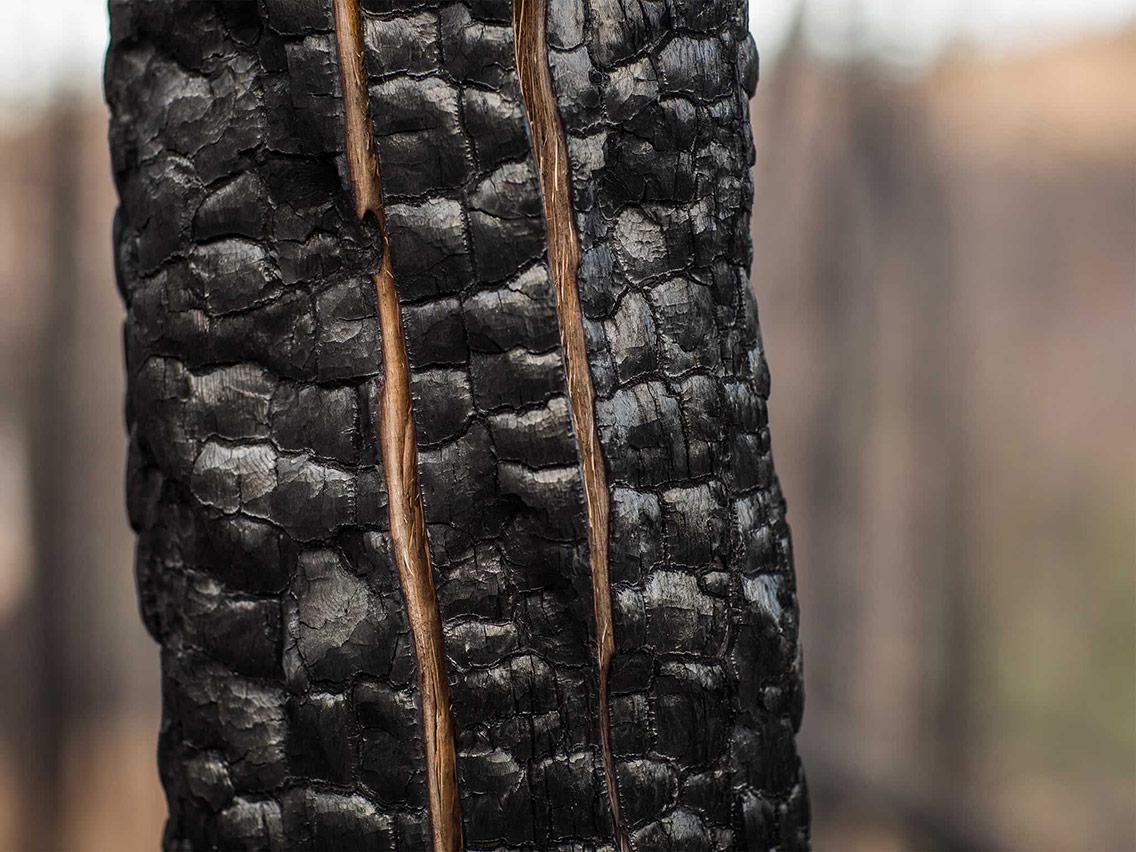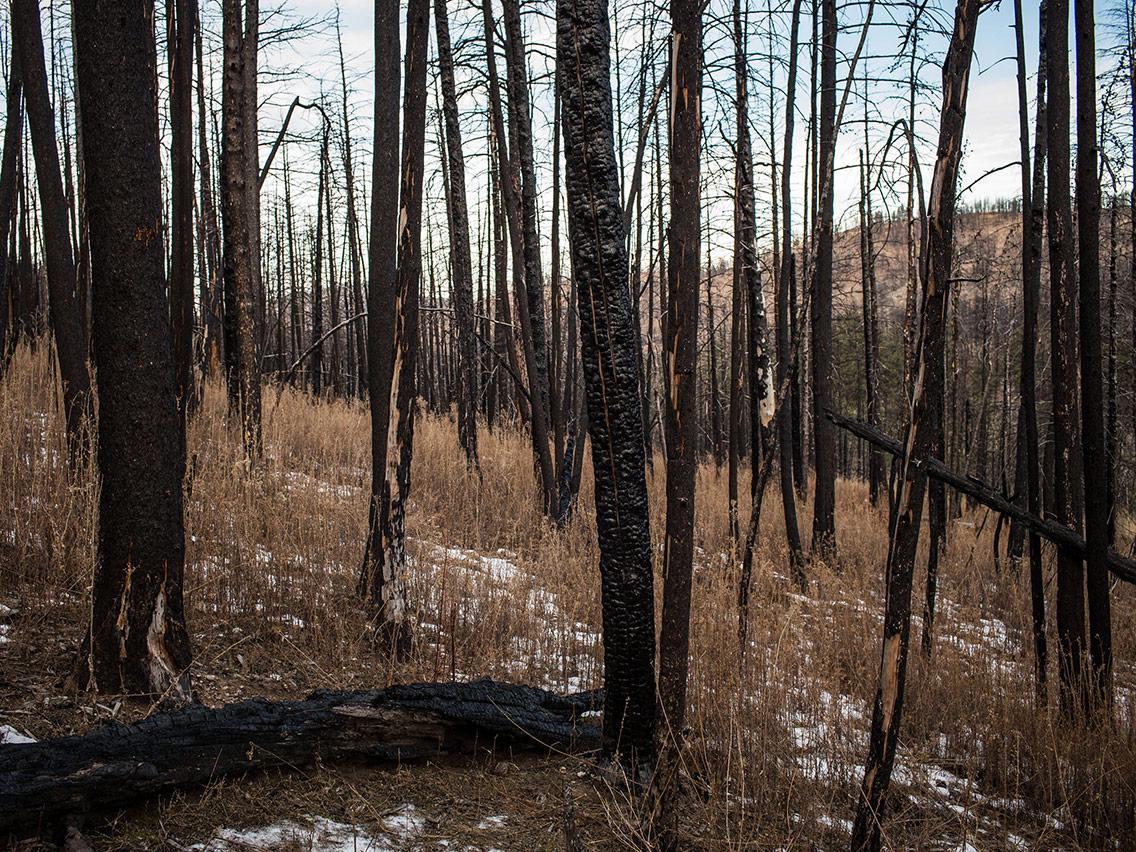Professor of 燃烧的问题
Flood and fires have swept through Colorado forests on a spectacular scale, and the changes left behind are obvious even to casual observers. Darkened ash-scapes, twisted and broken trees, mangled debris and silt-covered riverbanks are significant reminders of high water and wildfires.
It’s what isn’t so obvious, though, that interests Dr. Scott Franklin, professor of ecology at the University of Northern Colorado. Franklin studies “disturbance ecology,” which includes disturbances from the elements as well as from human-made changes in the landscape—like the placement of oil wells in a specific location.
Franklin, who teaches ecology and biology at UNC, earned a bachelor’s degree in biology/conservation management, a master’s degree in forest ecology and two doctorates—a PhD in plant ecology from Southern Illinois University-Carbondale and a PhD in biology/forestry from the University of Joensuu in Finland where he was a Fulbright Scholar. 之前 coming to UNC he was an associate professor at the University of Memphis. In 2012 Franklin was named the College of Natural and Health Sciences Faculty Mentor of the Year in 本科 研究. He explores numerous research topics in the classroom 在战场上.
“One of the major things I’m looking at is how aspen trees are doing as far as the impact of fire and aspen’s ability to maintain its population in the mountains,” he 说.
He and his students have also looked at “mastication” (the process of grinding up vegetation to reduce the amount of fire fuels in the forest) and its effect on ponderosa pine; the deposition of volatile organic compounds on grasses near wells, and in turn the effect of that deposition on cattle; and the impact the 2013 floods on plant communities.
Recently, Franklin and two of his students hiked up through a burned area in Rist Canyon, outside LaPorte, Colorado, where they collected core samples from burned trees in order to determine the age of the forest. “When we know what age the forest was when a burn came through, we can relate that to response of the trees to the fire.”
Franklin explains that understanding how a forest is responding and how well it’s recovering is important. “By using topography data to determine erosion, we can evaluate the long term impacts of fire and decide if we need mitigations, like erosion control,” 他说. It’s knowledge Franklin can take into the classroom for discussion, deeper understanding and critical thinking, and it’s that combination of teaching and research that brought Franklin to UNC in 2008.
“I like the combination of teaching and research here. UNC holds teaching to a high caliber and holds research quality to a high caliber. I love to work with students and love to bring what we do with research into the classroom. It makes me a better 老师.”
The mentoring relationship between faculty and students is part of the University’s focus on the scholar 老师. “We have our faculty teach almost all upper division 实验室. Because of the interaction with faculty there is a lot of research potential 为本科生. There are very high quality faculty here doing great research and 教书,”他说.
He points out that the combination of research and teaching is what makes UNC unique, because faculty are not only experts in their field, they are also innovators in their field who bring research from their field into the classroom and apply cutting edge 教学方法. It’s what makes UNC unique, and aligns closely with his goals to teach while pursuing research. “Philosophically,” 他说, “I believe in the way UNC 做事.”













